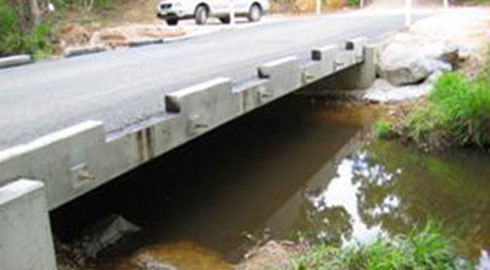
Waterway crossings can affect the health of aquatic habitat and fish populations in several ways. Structures such as causeways, pipes and culverts, can prevent fish passage by creating a physical blockage, a hydrological barrier, or by forming artificial conditions that act as behavioural barriers to fish. Road crossings have also been linked to increases in sediment and other inputs from adjacent floodplains and slopes. Furthermore, some structures can adversely affect fish by altering natural flow patterns, disrupting localised erosion and sedimentation processes, and affecting instream habitat condition. In 2005 detailed field assessments were conducted for over 6,800 waterway crossings in NSW coastal catchments, with over 1,400 identified barriers prioritised in terms of their impact on aquatic biodiversity, benefits should the structure be remediated, and the ease of structure remediation. In order to illustrate best-practice techniques associated with the design, construction, and remediation of waterway crossings works were undertaken to improve fish passage at 12 structures.
| Organisation | NSW DPI |
|---|---|
| Contact | Scott Nichols, Ph: (02) 6626 1396, email: [email protected] or Dr. Matthew Gordos, Ph: (02) 6626 1395, email: [email protected] |
| Funding Body | NSW Environmental Trust |